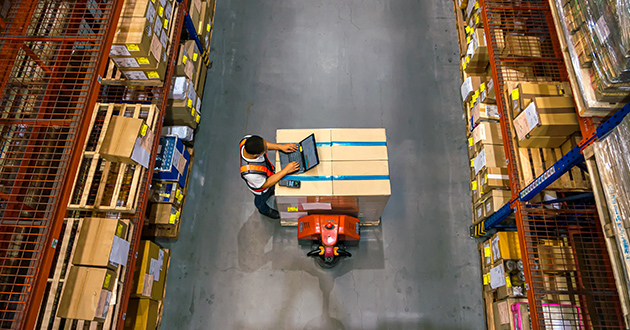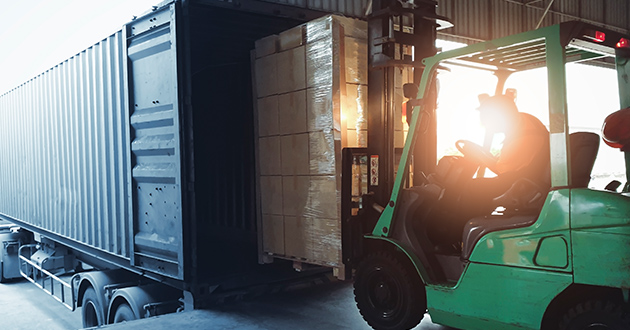Within the complex supply chain, it’s imperative to efficiently and effectively optimize the flow of products through the network from start to finish. The logistics function within the supply chain coordinates the facilities, people, equipment and other resources necessary to ensure products move along the supply chain and successfully arrive at their destination. Here, we’ll discuss the elements required to run a logistics operation properly.
Logistics is a critical and essential component of successful supply chain management. It is responsible for the processing and coordination of all products, raw materials and services throughout the entire supply chain –– from manufacturing and production to distribution, fulfillment and final delivery to customers and end users.

The supply chain is the actual network of suppliers that deliver products from raw materials to end customers. Logistics is the engineered or transactional flow of information, goods, and money within that network. Proper orchestration of the logistics functions is required to get the materials and products where they need to go within the supply chain.

The flow of products within supply chain logistics can move in various directions and is typically categorized into four different areas:
This includes storing and transporting materials, products and information from suppliers through the warehouse and into manufacturers’ facilities for processing and production.
This is the process by which goods move through the warehouse into the hands of the end users and is often referred to as the order fulfillment process.
This usually happens in the event of customer returns or with products that need repairs/servicing, resale, recovering or recycling/proper disposal. For more information on reverse logistics, visit ascm.org/lp/reverse-logistics/.
3PL logistics allows companies to receive orders and promptly deliver products even when they don’t have the necessary staff or the inventory storage facilities required to handle the order processing. Other types of outsourced logistics functions include:
There are several functions that take place within the logistics process that enable products to move successfully within the supply chain:
The entire logistics process begins with the order processing and ends with product fulfillment. This requires a series of activities including order placement, picking inventory, sorting, packing, and shipping and results in the order fulfillment when the product reaches its destination.
Proper handling of goods and materials ensures that products are safely transported throughout the logistics process, from manufacturing to distribution. This activity often incorporates specialized equipment that can be manual, semi-automated or fully automated. Done successfully, this function can lower costs and elevate the customer experience.
Knowing how much stock is currently stored and needed is critical to predicting the demand in the supply chain operations. It also determines the speed of production processes, which can contribute to cost efficiencies. Just-in-time inventory is a popular method for increasing efficiency by accurately forecasting demand, reducing inventory holding costs and increasing inventory turnover.
Maintaining business growth requires proper storage of goods and products. This involves selecting the right warehouse by analyzing the structure, layout, dimensions and functions. For instance, specific warehouse features will be required if a temperature-controlled environment is necessary. Using real-time data will optimize warehouse operations and ensure efficiency and timely delivery.
Efficient transportation management requires selecting the appropriate mode of transportation, coordinating transloading and cross-docking, optimizing routes, managing carrier contracts and relationships and delivering goods safely and on time. Successfully managing this function in the supply chain can reduce costs, improve customer satisfaction and minimize environmental impact.
During the logistics process, products must be properly packaged to protect them from damage during delivery, meet safety and customs regulations and maintain quality branding. Accurate labeling is another important step in this process and serves to clearly identify your products and ensure they reach the right destination.
In the data-driven environment of logistics, the flow of information is vital to providing fast and accurate service to customers and manufacturers. It helps control precision in product availability and timing of delivery to provide superior customer service.
Reverse logistics refers to returning the products from end users back through the supply chain to either the retailer or manufacturer. Returns management is the most common type of reverse logistics and refers to regular customer returns. Ideally, this provides a seamless, hassle-free return method that boosts customer loyalty and brand image. For more information on reverse logistics, visit ascm.org/lp/reverse-logistics/.
Logistics encompasses a broad scope of responsibilities within the supply chain, including transportation, warehousing, inventory management, order fulfillment and distribution.
Transportation is a critical component of supply chain logistics and specifically refers to the physical movement of materials and goods, including choosing the proper modes of delivery (i.e., truck, train, air, sea) and associated processes, such as routing, scheduling and tracking.
Successful transportation ensures products move efficiently and safely within the supply chain and arrive promptly at their correct destination at the right time and in the right condition.

Warehouses serve as intermediate points between production and consumption, where products are stored, sorted, consolidated and prepared for distribution. In addition to storage, proper warehousing plays a crucial role in inventory management, order fulfillment and value-added services such as packaging, labeling and quality control.
With so many literal moving parts and pieces and scheduling specifications, implementing effective supply chain logistics has many challenges.
These can arise due to uncontrollable circumstances such as traffic infrastructure issues, vehicle malfunctioning, weather issues and accidents.
In addition to causing transportation delays, weather-related disruptions such as hurricanes, snowstorms or floods can also affect logistics by impacting global supply availability, especially in industries that involve food or natural resources.
If your inventory records do not accurately reflect the current level of inventory available, it can affect product fulfillment and customer satisfaction, ultimately eroding profits and brand equity. Proper utilization of technology is vital to avoid this challenge.
Often the most complicated and expensive part of supply chain logistics,last-mile delivery is the point after products are shipped to warehouses and sent out for final delivery. Even though this last step may only cover a short distance, many errors can take place here due to the diversity of routes and package orders.
New cloud-based technology is emerging daily to make managing supply chain logistics more efficient, cost-effective and successful. Incorporating advanced software and platforms into your logistics processes will improve accuracy, expedite delivery and ultimately increase customer satisfaction and revenue. Here are some of the technology options available to enhance your supply chain logistics:
Helps ensure timely delivery of products by optimizing loads and delivery routes, tracking freights along routes and automating manual, time-consuming tasks like trade compliance documentation and freight billing.
Streamlines the tracking and management of orders, stock levels, sales and deliveries by providing real-time insight and automation capabilities. IMS minimizes errors and incidents like overstocking or understocking and ensures the efficient use of time and resources.
A key component of supply chain logistics management that takes IMS a step further to provide real-time visibility into a company’s entire inventory in warehouses and transit. WMS offers tools for picking and packing processes, resource utilization, analytics and more.
Fleet monitoring technology that allows companies to access real-time data on delivery times, driving routes and driver behavior, empowering data-driven decision-making to improve overall operations. Once collected, data can be analyzed to identify patterns and trends in delivery times and routes to optimize transport.
Colossal advancements in this field have enabled self-learning algorithms that can be applied in building predictive tools to create more efficient transportation routes.
The following links provide more in-depth information on other supply chain topics:
Subscribe today and you’ll receive valuable supply chain insights from the top leaders in the industry that will help you do your job better, faster, and more efficiently. From industry news to insider tips and trends, Signals delivers a quick read on the latest information on supply chain management right to your inbox.
